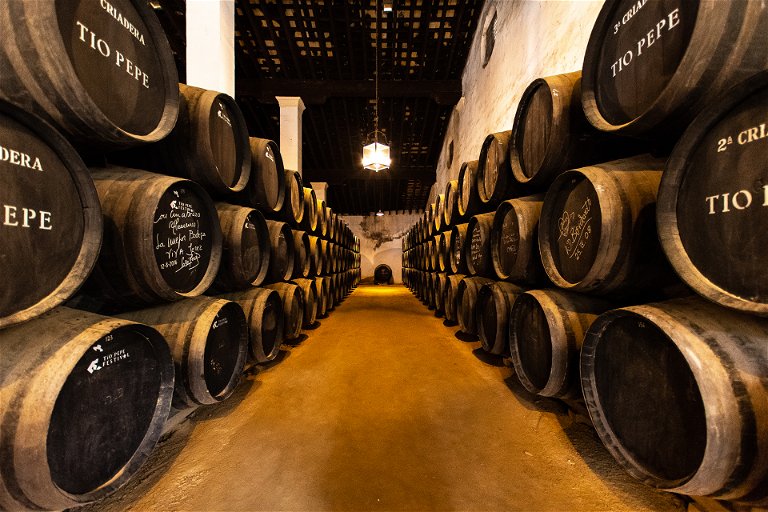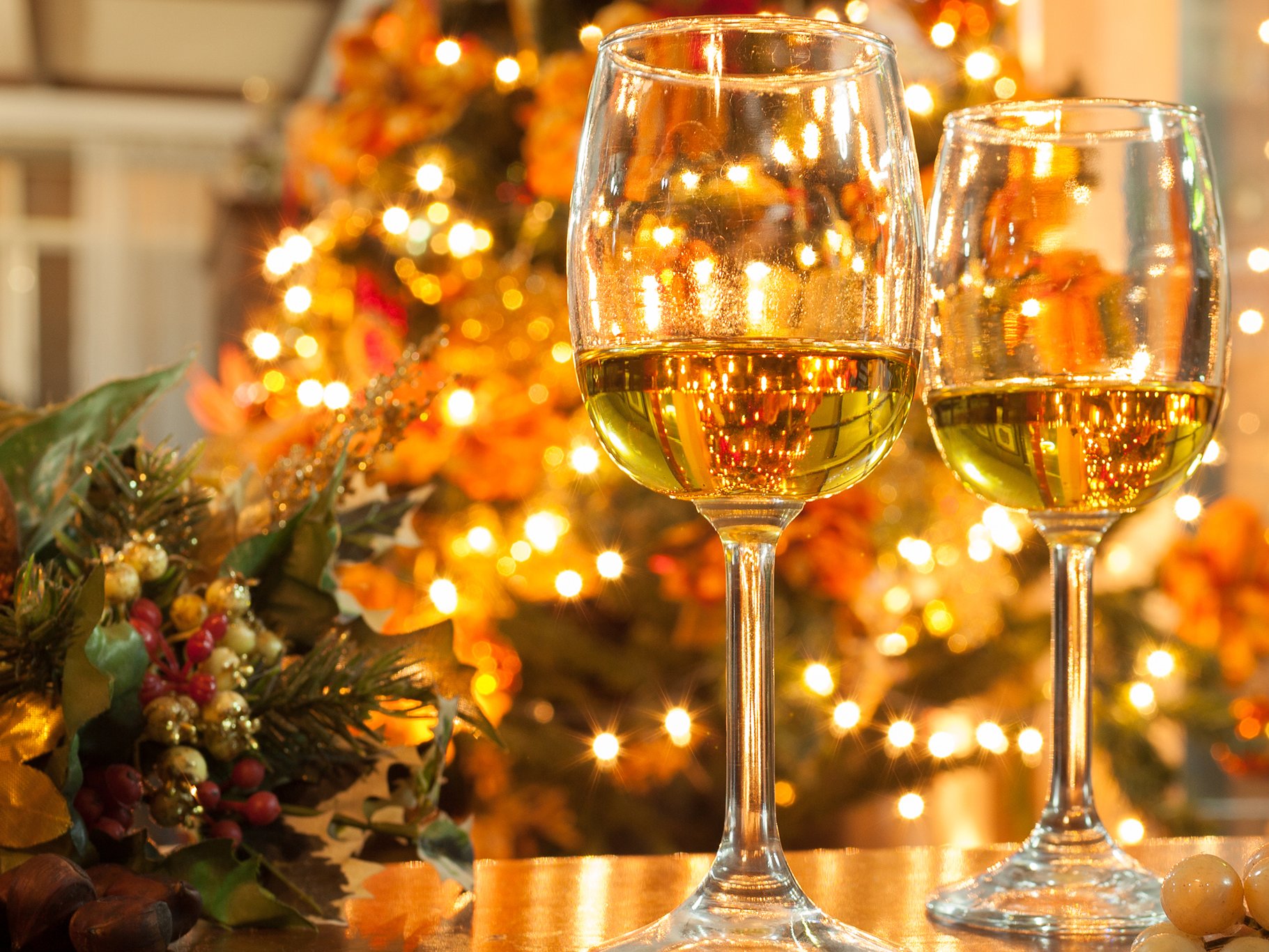The great Christmas pud conundrum
Our guide to the notoriously difficult task of selecting wines for your Yuletide dessert.
The traditional Christmas pudding is a complex confection. Stuffed full of dried fruits, nuts and candied citrus, groaning with winter spices, and soaked in brandy – it’s an aromatic rollercoaster. And when you add a rich blanket of double cream or vanilla-scented custard, you end up with a flavour and texture bomb that’s hard to master. What goes for Christmas pud is also true of Christmas cake and mince pies – the latter with added complexity from high-fat pastry often containing salt as well as sugar. Other traditional Christmas sweets, from spiced biscuits to stollen, share a similarly tricky profile.
You can just fill goblets with more cognac, of course, but at this point in the festivities, your jaded palate is probably craving something lighter, fresher and less alcoholic. You need a wassail bowl filled with reviving wine, but what to choose? Dry or off-dry still and fortified wines haven’t a chance of matching the spiced intensity and sweetness on display here. So put away the Fino you had with the smoked salmon and the splash of Pinot left over from the turkey. They will seem, to paraphrase another Christmas favourite, Bilbo Baggins, “thin and stretched” in comparison to the sugary sweetmeats.
The adage about choosing a wine sweeter than the pudding only gets you so far: at Christmas, it might well leave you toothless, with numb tastebuds. So, yes to sweetness and intensity, but neither in overwhelming amounts. Instead, you need floral uplift, acidity and versatility to take you from the deep intensity of prunes right through to the high, aromatic warmth of ginger. It’s a tall order, but our guide is here to help with this traditional pudding pairing conundrum.
Ports – think white, or rather golden, instead of red
Port is an obvious place to start, as it shares the sweetness, dried fruit and nutty profile of many festive puds. Lighter, more refreshing tawnies work here, but most red ports are too rich and heady. Don’t even think of cracking open the vintage at this point: save it for the cheese. White ports, on the other hand, offer intriguing possibilities. Fresh Moscatel-based examples will hardly register (much better for an early evening pick me up with tonic, ice and orange), but an oxidatively aged white port, made with Malvasia, has the orange peel, dried apricot and nuts you need in your glass. Look for examples that have aged for 10 years or more: Kopke, Portugal’s oldest port house, has a lovely range right up to an extraordinary 50-year-old wine. The warm aromatics here go perfectly with the spiced biscuits so popular at Christmas time, from Lebkuchen to Speculaas.
Madeiras: Portugal’s uplifting island wines
The fortified wines of Portugal’s Autonomous Region of Madeira, to give the island its full title, have all the necessary fruit and high acidity for Christmas pairing. Many of the simpler wines, blends of the almost dizzying number of local varieties, will indicate the sweetness level on the bottle – something medium sweet/rich or sweet/rich is what you’re after. Those labelled with an indication of age, anything upwards of 5 years, will reward the additional investment. But it’s with the varietally labelled wines that things get interesting. Three of the island’s noble grapes, Boal, Malvasia (aka Malmsey) and Terrantez will gift your Christmas pud caramel, sultanas and raisins, as well as the uplift of citrus oils and floral notes. Producers such as Henriques & Henriques or Blandy’s are quality-focused, and their wines widely available.
Sherries – yes, but not the usual suspects
Dry sherries might have the elegance of Andalucian bodegas in their favour, but they have no place here. Instead, it’s the world of sweet sherries that beckons. Things have mercifully moved on since the “good old days” of anonymous brown blends sweetened with grape juice and served warm in nasty little glasses (don’t worry, you can still find all this if you’re nostalgic). For a start, there are the sherries whose concentrated sweetness and aromas come from sun-dried grapes. Most common is super-intense, spicy, treacly Pedro Ximénez (PX). However, its sugar levels are so achingly high without relief from higher levels of acidity, that it’s best passed over at Christmas pud time. The Moscatel grape is also dried in this way, resulting in less hair-raising sugar and more signature floral lift: it’s a good option, although less common.
More approachable and widely available is the new wave of high-quality sweetened sherries that blend PX into Palo Cortado, Amontillado or Oloroso. Look out for “VOS” or “VORS” on the label to indicate extensive ageing. Jerez stalwarts Gonzalez Byass produce two lovely, venerable options: medium sweet Apostoles and sweeter but balanced Matusalem. The latter is redolent of dates and nuts but also coffee, mocha even. It’s perfect with many puds, including tricky chocolate-based creations like Bûche de Noël or Yule Log.

The secrets of France and Italy’s deep south
With much of the fortified focus falling on the Iberian Peninsula, the contributions of France and Italy are apt to be somewhat eclipsed. What the French bring to the party, however is a range of wines under the generic title Vins Doux Naturels. Hailing from the balmy south of the country, they are produced largely from white muscat grapes or red Grenache. The reds of Banyuls or Maury typically have less residual sugar than their port cousins, with whom they share some flavour characteristics. They make excellent pairings with dark, prune-laden chocolate mousse or Black Forest gâteau. The floral quality of white Muscat de St-Jean-de-Minervois pairs nicely with warm citrus or apricot desserts, its fuller-bodied cousin Muscat de Frontignan with tropical fruit tarts and flans.
It's time Italy’s classic fortified, Marsala, came in out of the cold – or rather back from the heat of the kitchen. Sadly, most people only know its honied perfume from cooking: like Madeira, it is commonly used in sauces, and mostly famously provides the signature flavour of zabaglione/sabayon. It comes from Sicily, bringing with it syrupy aromas of glace-fruits, brown sugar and vanilla. Go for the sweeter wines and those labelled “Superiore Riserva” or “Vergine” to guarantee the complexities of age. Cantine Pellegrino is perhaps the most familiar producer, offering a full range; Marco De Bartoli even has some classic bottling of 100% Grillo wines, the quality grape of Marsala production. The zabaglione connection hints at how good these wines are with creamy deserts – anything from trifle to gâteaux or ricotta pastries. The nutty fragrance of aged Marsalas can even cope with marzipan-heavy Christmas cake or pine nutty Torta della Nona. If you don’t want to serve Marsala in a glass, then add a slug or three to your custard and everyone will swoon.
Further south still for Australia’s classic stickies
In a world obsessed with Australia’s still wines, their traditional stickies can fall under the radar. They are well worth seeking out. Above all sits the peerless Rutherglen Muscat. Most are still made by family-run businesses in the traditional way – like Marsala, a kind of modified fractional barrel blending system similar to sherry soleras. The result is a honeyed nectar not a million miles from PX in profile, although the sugar and spice are dialled down in favour of figs, dates and a little more freshness on the palate. These are still luscious wines however, and they partner sweet puddings with aplomb. They come in a range of styles depending on age: seek out “Classic” of “Grand” for greater complexity and treacly concentration. The unctuous but floral profile of these wines goes well with festive spiced cakes and yeasted breads of all types, from Stollen and Panettone/Pandoro to Gingerbread and Spanish Roscón de Reyes. Look for classic producers like Campbells, or Chambers Rosewood.



